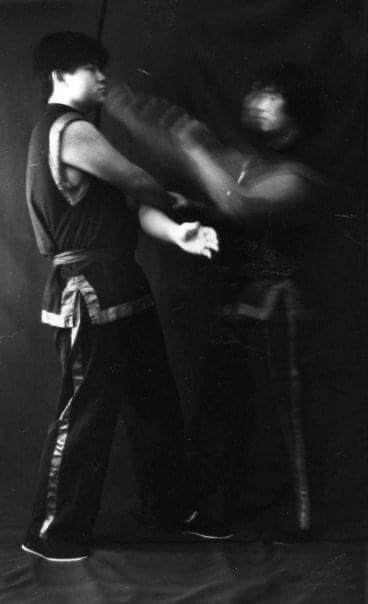Training Equipment for Enhancing Speed and Agility in Martial Arts
The Importance of Speed and Agility in Martial Arts
Speed and agility are crucial components of effective martial arts techniques. The ability to move swiftly and change direction rapidly can help you evade opponents’ strikes, deliver quick and accurate attacks, and execute complex combinations with precision. No matter your level of expertise, incorporating speed and agility training into your routine can elevate your fighting style and take your skills to the next level.
Developing Explosive Speed
1. Jump Rope: Jumping rope is a classic and highly effective way to enhance your footwork, coordination, and cardiovascular fitness. Incorporate various skipping techniques, such as double unders and criss-crosses, to challenge yourself and improve your explosive speed.
2. Speed Ladder: A speed ladder is a ladder-like training tool placed on the ground to improve footwork and coordination. Practice quick foot movements by going through the ladder in different patterns and combinations.
3. Sled Training: Sleds with resistance can be pulled or pushed to develop explosive strength and speed. Sled sprints and drags are excellent for building lower body power, which translates to faster movements in your fighting style.
Enhancing Agility
1. Agility Ladder: Similar to the speed ladder, an agility ladder is designed to enhance your footwork, agility, and coordination. Incorporate lateral movements, hops, and quick directional changes to improve your agility in different directions.
2. Cones and Markers: Set up cones or markers in various patterns to simulate quick changes in direction. Use them for agility drills that challenge your ability to maneuver around obstacles while maintaining control.
3. Balance Boards: Balance boards and stability trainers improve your proprioception and balance, which are crucial for agile movements. Balancing on these boards engages your stabilizing muscles, enhancing your overall agility.
Martial Arts-Specific Speed and Agility Training
Different martial arts disciplines have unique requirements when it comes to speed and agility. Let’s explore how to tailor your training for specific martial arts:
Boxing
In Boxing, speed and agility are paramount. Shadowboxing with a focus on quick combinations and head movement can improve your speed. Utilize a speed bag to enhance hand-eye coordination and rapid punch delivery.
Taekwondo
Taekwondo practitioners benefit from agility training that emphasizes high kicks and quick changes in stance. Incorporate kicking drills with agility ladder work to improve your kicking speed and accuracy.
Brazilian Jiu-Jitsu (BJJ)
BJJ may not seem as reliant on speed, but agility is crucial for transitioning between positions and executing submissions. Incorporate agility ladder drills with positional changes to enhance your ground agility.
Wing Chun’s Contact Reflex and Chi Sao

Wing Chun, a unique fighting style known for its close-range combat techniques, places a special emphasis on developing speed through contact reflex. Contact reflex involves responding to physical contact rather than relying solely on visual cues. This approach is rooted in the understanding that reacting to touch is often faster than reacting to what you see.
Chi Sao, a fundamental training exercise in Wing Chun, is a perfect example of contact reflex development. In Chi Sao, practitioners engage in close-range sensitivity drills, maintaining constant contact with their partner’s arms. This tactile feedback allows Wing Chun practitioners to sense their opponent’s intentions and movements, enabling them to react swiftly and effectively.
The Role of Martial Arts Instructors
Martial arts instructors play a vital role in guiding students toward effective speed and agility training. Your instructor can design drills and routines that align with your fighting style and skill level. Moreover, they can provide valuable feedback and corrections to ensure your movements are efficient and effective.
Incorporating Martial Arts Techniques
Integrating your specific martial arts techniques into speed and agility training is essential. For example, if you’re a Karate practitioner, work on fast and accurate combinations using focus mitts. If you’re a Wrestler, practice explosive takedowns and sprawls.
Conclusion
As you embark on your martial arts journey, remember that speed and agility are qualities that can be honed through consistent and targeted training. The right equipment, combined with discipline and dedication, can help you develop explosive speed and enhanced agility that will serve you well in your chosen fighting style.
Jump ropes, speed ladders, sleds, agility ladders, balance boards, and more offer a range of options for enhancing your speed and agility. By customizing your training to your martial art, you’ll be able to optimize your performance and make noticeable improvements in your overall skills.
Whether you’re aiming to outmaneuver your opponents in sparring or execute lightning-fast combinations, the right training equipment is your ally in achieving your speed and agility goals in the realm of martial arts. And for practitioners of Wing Chun, the emphasis on contact reflex and Chi Sao can provide an added layer of speed and responsiveness that can give you a unique advantage in close-range combat scenarios.

